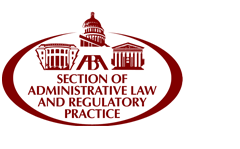Article Title
The Petition is Mightier than the Sword: Rediscovering an Old Weapon in the Battles over "Regulation Through Guidance"
Volume
63
Issue
2
First Page
381
Abstract
Federal agencies love to publish guidance documents—those official “statement[s] of general applicability and future effect, other than [regulations]” that set forth “a policy on a statutory, regulatory, or technical issue or an interpretation of a statutory or regulatory issue.” They “come in a variety of formats and names, including interpretive memoranda, policy statements, guidances, manuals, circulars, memoranda, bulletins, advisories, and the like,” and some agencies may even offer guidance “in new and innovative formats, such as video or audio tapes, or interactive web-based software.”
Scholars have repeatedly indicated that “[g]uidance documents greatly outnumber legislative rules” and are issued “in a volume dwarfing the [underlying] regulations.” Things were not always this way. Agencies formerly announced most positions through notice-and-comment rulemaking or adjudication, and have only more recently begun to rely on guidance documents.
But agencies have some good reasons to issue large amounts of guidance. First, of course, many agency stakeholders “earnestly” seek it, for meaningful guidance “helps regulated entities comply with complicated regulations” and is essentially equivalent to free legal advice for parties confronted with complex legal requirements. This potentially reduces agencies’ burden of replying to repeated stakeholder requests for individual interpretations of particular regulations. As the D.C. Circuit long ago recognized, “businessmen engaged in forward planning may rightly call for” agency guidance in order “to permit optimum allocation of resources in the light of careful assessments of the alternatives.”
Generalized agency interpretations and policies announced in guidance also support agency staff as they attempt to apply and enforce the law. This “contribute[s] to the discipline of staff action, its predictability and regularity,” and “[a]gency administration is aided when central officials can advise responsible bureaucrats” by supplying official agency positions on complicated regulatory issues.
In addition, average “[c]itizens are better off if they can know about these instructions and rely on agency positions.” As Judge Richard Posner wrote for the Seventh Circuit, “Every governmental agency that enforces a less than crystalline statute must interpret the statute, and it does the public a favor if it announces the interpretation in advance of enforcement.”
Moreover, the Administrative Procedure Act (APA), which governs federal agencies’ rulemaking procedures, exempts most guidance documents from the notice-and-comment process required for most regulations. Agencies can therefore “issue guidance more quickly than legislative rules, reducing the time that regulated parties are uncertain about their legal obligations.” Thus, “appropriate use of guidance documents allows agencies to avoid devoting scarce time and resources to unnecessary rulemaking” and clarification. Or, as summarized by the Office of Management and Budget (OMB), guidance, “used properly, can channel the discretion of agency employees, increase efficiency, and enhance fairness by providing the public clear notice of the line between permissible and impermissible conduct while ensuring equal treatment of similarly situated parties.”
